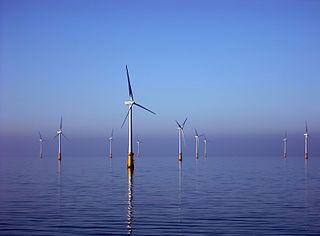Tesla’s Meteoric Rise in the Electric Vehicle Space

What to make of this whole phenomenon? Obviously, the market sees pent up end-user demand for electric vehicles that has been fantastically under-served by the fits and starts of the auto industry and the many failed start-ups that hoped to become part of it.
Congratulations to the folks up there in Palo Alto for a job well done. May your success continue – even without me on-board as a shareholder. Grrrr.

 Many potentially profitable renewable energy projects are never developed because of the difficulty in quantifying the project risks. The problem is that the projects are dependent on local wind rates, sunshine or rainfall levels, plus the local geography, as well as the normal considerations for a fossil fuel development, such as property rights and the market rates paid for power. In other words, renewable energy projects are not easily replicable and that adds extra uncertainty to project development.
Many potentially profitable renewable energy projects are never developed because of the difficulty in quantifying the project risks. The problem is that the projects are dependent on local wind rates, sunshine or rainfall levels, plus the local geography, as well as the normal considerations for a fossil fuel development, such as property rights and the market rates paid for power. In other words, renewable energy projects are not easily replicable and that adds extra uncertainty to project development. Fire is a regular, but often tragic, occurrence. Whether started in a family home, a commercial environment or outside, both accidental and deliberate fires can be potentially devastating. One of the most destructive types of fire, though, is forest fires and these can wipe out entire communities and their homes, habitats, wildlife groups and timber and, as a result, are one of the main causes of deforestation.
Fire is a regular, but often tragic, occurrence. Whether started in a family home, a commercial environment or outside, both accidental and deliberate fires can be potentially devastating. One of the most destructive types of fire, though, is forest fires and these can wipe out entire communities and their homes, habitats, wildlife groups and timber and, as a result, are one of the main causes of deforestation. In his response to my post on eating less meat, frequent commenter and really smart guy Glenn Doty writes:
In his response to my post on eating less meat, frequent commenter and really smart guy Glenn Doty writes: I’m what could be called a “compulsive guesser.” When someone asks me something – it could be the outdoor temperature or the latitude of Sri Lanka — I always take a guess before looking it up.
I’m what could be called a “compulsive guesser.” When someone asks me something – it could be the outdoor temperature or the latitude of Sri Lanka — I always take a guess before looking it up. Those keeping track of the
Those keeping track of the  Yesterday I finished Gore’s new book THE FUTURE: 6 DRIVERS OF GLOBAL CHANGE. Overall a good read. But Gore pushes mostly centralized political policies and corporation-led mostly high-tech changes to reach his proposed solutions to so many interrelated problems. He correctly cites global rising energy usage and wants more energy efficiency and renewables, but says nothing about substantially reducing overall energy use, including how to start a global trend to lower the rates of energy usage growth.
Yesterday I finished Gore’s new book THE FUTURE: 6 DRIVERS OF GLOBAL CHANGE. Overall a good read. But Gore pushes mostly centralized political policies and corporation-led mostly high-tech changes to reach his proposed solutions to so many interrelated problems. He correctly cites global rising energy usage and wants more energy efficiency and renewables, but says nothing about substantially reducing overall energy use, including how to start a global trend to lower the rates of energy usage growth. I hope everyone is enjoying this day on which we thank our mothers for being the wonderful and kind people they are, and express our gratitude for the numerous sacrifices they made on our behalf.
I hope everyone is enjoying this day on which we thank our mothers for being the wonderful and kind people they are, and express our gratitude for the numerous sacrifices they made on our behalf. Here’s a video on
Here’s a video on  I thought readers might appreciate this collection of
I thought readers might appreciate this collection of